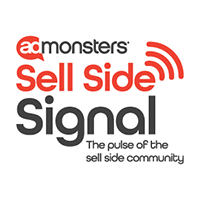Once upon a time—say, 10 years ago or so—double opt-in was the gold standard of permission-based e-mail. Marketers were urged to seek the multistep double opt-in over a single opt-in in part to confirm their legitimacy and distinguish their operations from those of the less salubrious e-mailers. What’s more, statistics showed that double opt-in files had higher open, click-through, and deliverability rates.
Today, however, a true double opt-in appears to be the exception rather than the rule. Jay Schwedelson, president/CEO of list and marketing firm Worldata, goes so far as to estimate that fewer than 2% of e-mail lists are double opt-in—although it must be added that he has a very stringent definition of the term, and in fact he contends that no more than 25% of e-mails lists are truly opt-in at all.
All of which brings us to the question “Should I opt for single or double e-mail opt-in?”
Before we can answer that, we need to define our terms. The Email Experience Council (EEC) defines opt-in as “a specific, proactive request by an individual e-mail recipient to have their own e-mail address placed on a specific mailing list.” That also defines, by default, a single opt-in: A person requests to receive e-mails from a company, and the company responds by putting him on its list.
Double opt-in, according to the EEC, is “a process that requires new list joiners to take an action (such as clicking on an e-mailed link to a personal confirmation page) in order to confirm that they do want to be on the list.”
Many take double opt-in to encompass the so-called confirmed opt-in, which Tanya Hyde, vice president of client services at Infogroup’s Yesmail, defines as “an effective thank-you/welcome program that lets members quickly know that they have opted in.”
Seems clear-cut, no? Where it can get messy is with what Schwedelson terms “passive consent.” Let’s say a customer requests a print catalog online. At the bottom of the form, there’s a prechecked box beside verbiage that reads “Please uncheck this box if you do not want to receive e-mails from our company.” It’s legitimate, but Schwedelson contends that it’s actually “passive consent,” because the consumer does not need to take action in order to be placed on the company’s e-mail file; he actually needs to take an action—unchecking the box—if he wants to opt out of the list. What’s more, some might consider the wording confusing, with its double negative (“uncheck if you do not want…”) and could easily result in website visitors inadvertently allowing themselves to be added on to the e-mail file.
And if individuals begin receiving e-mails that they hadn’t knowingly requested, the company’s spam-complaint rate could increase, which in turn could lead to deliverability issues. Then, too, there’s the hit to the company’s reputation, which in today’s viral environment is no small thing.
Implementing a double opt-in process—sending those who have opted in an e-mail in response requiring them to take an action such as clicking a link embedded in said e-mail in order to confirm that they really do want to be put on the house file and didn’t just misunderstand the form—dramatically reduces the likelihood of recipients’ reporting subsequent e-mails as spam.
Another benefit of double opt-in, Hyde says, “is the potentially higher engagement that a double-opted audience may provide, assuming your program is useful and relevant to your customers.”
But there’s a rub: Because double opt-in requires additional effort on the customer’s part, it tends to result in fewer subscribers. “We know from experience that significant percentages of potential customers drop off in each step or screen of a multistep opt-in,” Hyde says. “Even the inclusion or exclusion of a prechecked opt-in box can change opt-in rates by a noticeable amount.”
In short, single opt-in will typically result in a larger but less engaged e-mail house file than double opt-in. “Generally you’ll see higher opens, clicks, and deliverability from double opt-in, though the volume of traffic, and subsequent sales, if applicable, from single opt-in programs may mitigate these higher rates of measurement,” says Hyde.
What does all this mean to you? By and large, the thinking is that a confirmed opt-in in which you follow up the initial passive or active request with a thank-you or welcome e-mail will work for most organizations.
“However, for financial services and some retail companies,” adds Hyde, “as well as other companies that might require financial transactions or personal information transmissions online, a [true] double opt-in may provide your customers with an added sense of comfort in the security of their transactions with you.”
Next week, we’ll look at opt-in best practices for single, confirmed, and double opt-in.
 Network
Network

